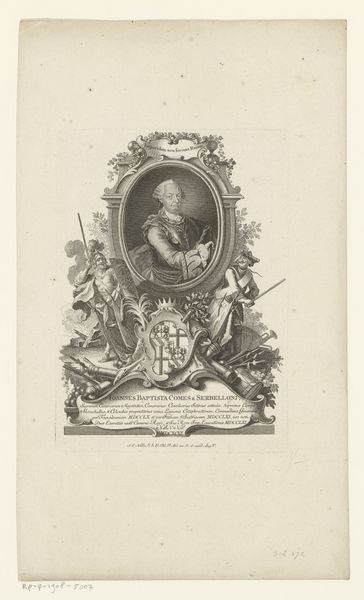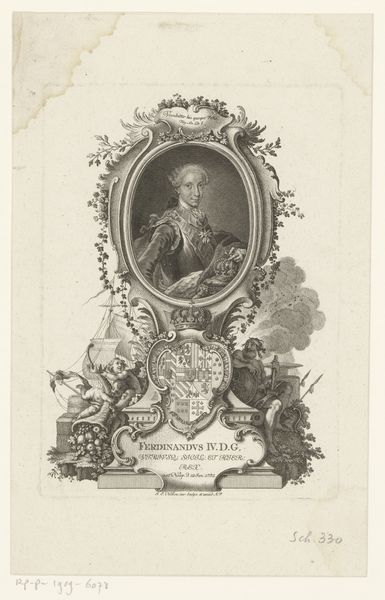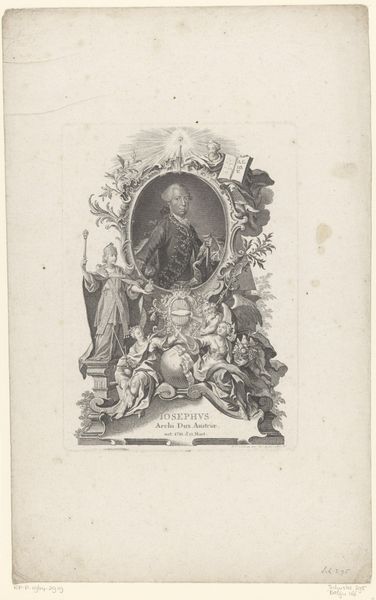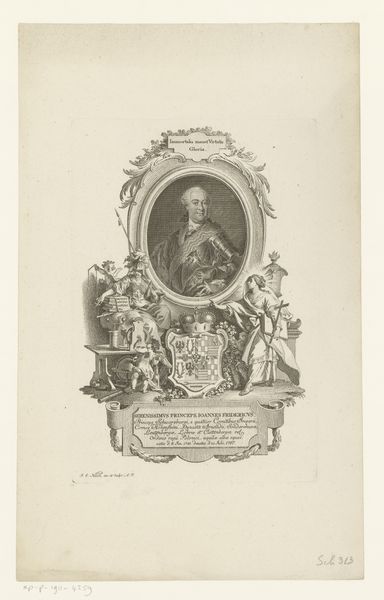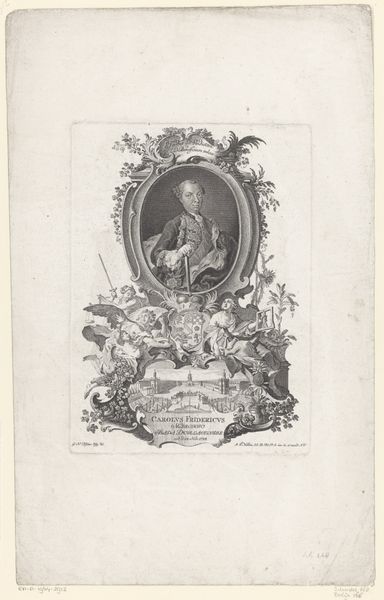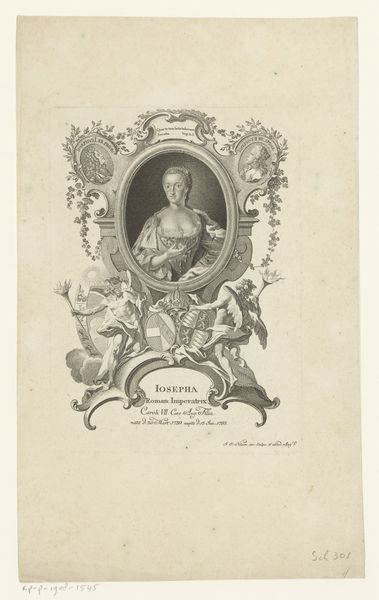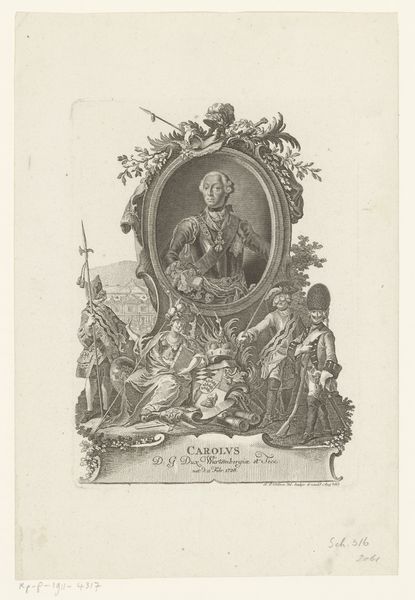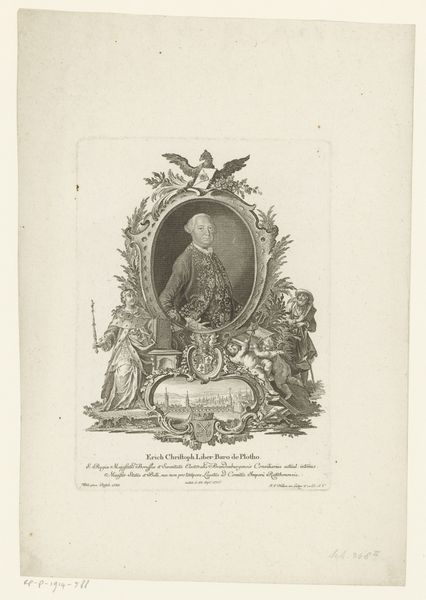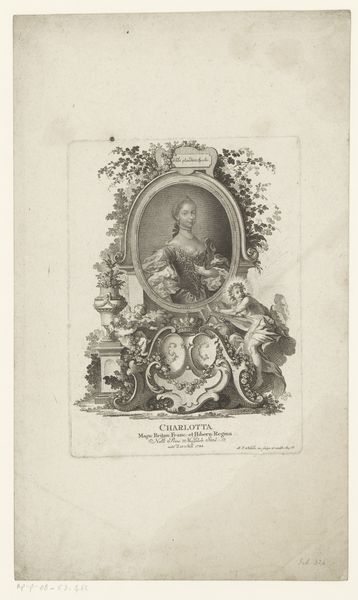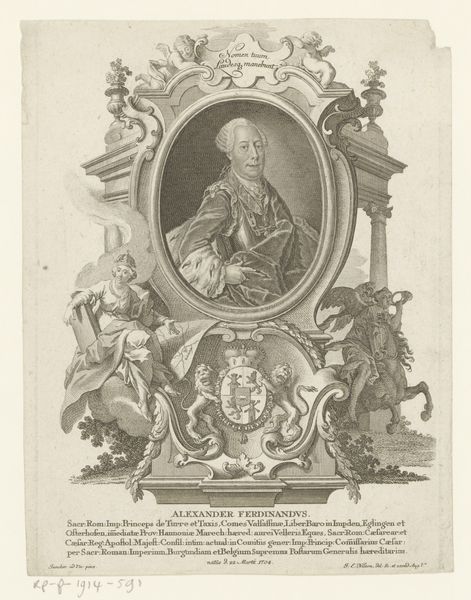
Dimensions: height 221 mm, width 162 mm
Copyright: Rijks Museum: Open Domain
Johann Esaias Nilson created this print of Charles III, likely in Augsburg, Germany, during the mid-18th century. Nilson’s print is an exercise in statecraft, designed to legitimize Charles III, who was then king of Spain. It surrounds the portrait of Charles with allegorical figures and symbols. The image creates meaning through visual codes and historical associations. On the left, a figure represents Spain's naval power, while on the right, a woman leaning on books represents knowledge. At the center, the ornate coat of arms visually reinforces Charles's royal lineage. This print must be seen in the context of the enlightenment’s focus on reason and order as the way to legitimize power. Charles III was a proponent of enlightened absolutism, a political idea that promoted rational and progressive governance. The image is not just a portrait; it's a carefully constructed piece of political communication. Art historians rely on archival research, including letters, diaries, and official records, to unpack the social and institutional context of works like this.
Comments
No comments
Be the first to comment and join the conversation on the ultimate creative platform.

